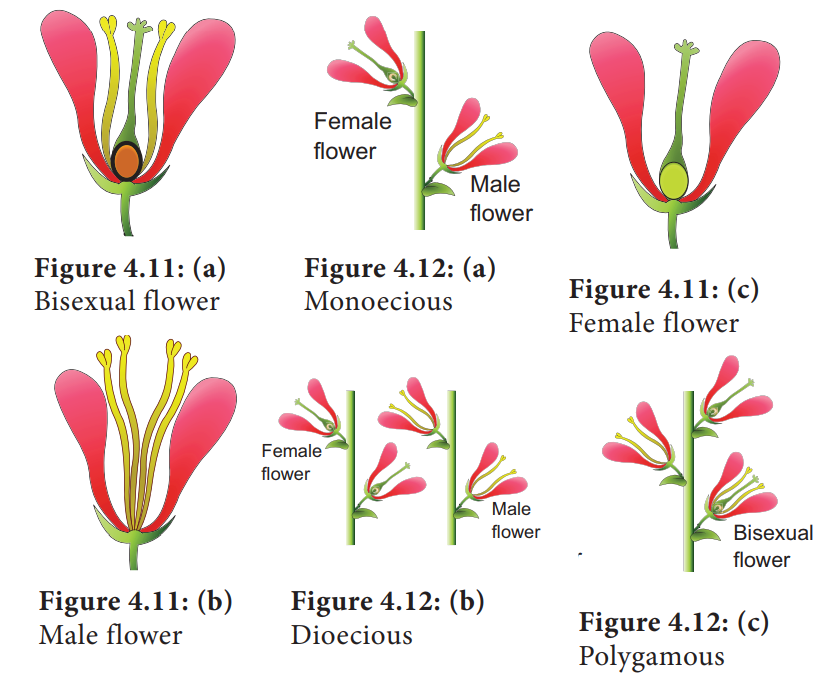
```html
# Discover: Do Plants Have Genders?
Have you ever wondered if the plants in your garden or the towering trees in the forest possess genders? The idea of flora sexuality might seem far-fetched, but delving into the world of plant reproduction reveals a fascinating and complex truth. Let’s explore whether plants exhibit gender-specific traits and how these differences influence their ability to thrive and propagate.
## The Basics of Gender in Plants
### Botanical Gender Defined
In the realm of botany, gender in plants refers to the reproductive roles that plants can assume. Plants can be unisexual, producing either male or female flowers, or bisexual, producing flowers that contain both male and female parts. This botanical gender system is crucial for understanding plant sex differences and how plant reproduction occurs.
### Unisexual vs. Bisexual Plants
When we talk about unisexual plants, think of them as having distinct male and female components. Male flowers produce pollen, which is necessary for fertilization, while female flowers contain ovules that, when fertilized, develop into seeds. On the other hand, bisexual plants combine these roles into a single flower, creating a self-contained system for reproduction.
Take the humble oak tree, for example. Some oak species have male and female flowers on the same tree, making them monoecious. Others have separate male and female trees, known as dioecious. Isn’t it amazing how nature finds such diverse ways to ensure the survival of its flora?
## Plant Sex Differences
### Sexual Dimorphism in Plants
Sexual dimorphism refers to distinguishable characteristics between male and female individuals of the same species. In plants, this can manifest in various ways, including differences in flower size, color, and even the physical structure of the plant itself. For instance, some plant species exhibit greater energy and resource allocation to either male or female functioning, leading to noticeable gender-specific adaptations.
### The Role of Flowers in Plant Reproduction
Flowers are the primary means by which plants carry out sexual reproduction. They contain reproductive organs such as stamen (male) and pistil (female), which facilitate the transfer of pollen from the male flower to the female flower. This process is not just about aesthetics; it’s a meticulously orchestrated dance that ensures the continuation of the species.
Consider the vivid colors and enticing fragrances of flowers. These traits are designed to attract pollinators, which unwittingly aid in the transfer of pollen, showcasing the intricate symbiosis between plants and their environment.
The life cycle of a plant is a marvel of evolution. It emphasizes the importance of **plant pollen** transfer a fundamental aspect of plant reproduction.
Reproduction in Plants offers in-depth insights into the complexities of plant reproductive strategies.
## Unraveling the Mystery of Plant Sexuality
### Comparative Analysis of Plant Reproduction
When we compare the reproductive strategies of different plant species, we begin to see a rich tapestry of adaptations tailored to specific environmental conditions. Some plants have evolved wind pollination, while others rely on insects or birds. These variations highlight the adaptability and resilience of plants in diverse ecosystems.
### Evolutionary Perspectives on Plant Gender
From an evolutionary standpoint, the development of gender-specific traits in plants can be traced back to the need for efficient reproduction and survival. Plants that successfully optimize their reproductive efforts have a better chance of passing on their genes to the next generation, ensuring their continued presence in the ecosystem.
To further explore the intricate world of plant sexuality, consider diving deeper into the research on how **plant environmental adaptability** influences gender expression. The differences in reproductive life strategies among **a wide range of plant life** provide a wealth of information.
Plant Repe Save dudisplaystyleoral lifecycle provides a comprehensive overview of how plants reproduce and thrive.
## Conclusion
So, do plants have genders? The answer is a resounding yes. The gender in plants is a multifaceted and fascinating topic that reveals much about the intricacies of plant life and reproduction. Understanding plant sex differences helps us appreciate the diversity and complexity of the natural world.
From the unisexual organizations of some plants to the bisexual designs of others, each species has tailor-made adaptation and life strategies to ensure their survival. So, next time you admire a blooming flower or a towering tree, remember that behind its beauty lies a world of hidden complexities.
To learn more about the captivating world of plant reproduction and gender in plants click here and embark on a journey of botanical discovery.
---
## FAQs
**1. What determines the gender of a plant?**
The gender of a plant is determined by its genetic makeup and environmental factors. Some plants have fixed gender roles, while others can shift gender under certain conditions.
**2. Can plants change their gender?**
Yes, some plants can change their gender in response to environmental stressors. This adaptability allows them to optimize their reproductive success.
**3. How do unisexual plants reproduce?**
Unisexual plants reproduce through the transfer of pollen from male flowers to female flowers.
Pollination overwhelms the senses but is crucial in nature some plants are designed to ensure the pollen is transferred reliably even for the wind plants
**4. Why is understanding plant gender important?**
Understanding plant gender is crucial for agronomy, conservation, and ecological studies. It helps in developing better crop varieties, preserving endangered species, and maintaining ecosystem balance.
**5. What is the role of flowers in plant reproduction?**
Flowers play a pivotal role in plant reproduction by containing the reproductive organs necessary for pollination and fertilization, ultimately leading to seed production and the continuation of plant life.
```


0 Response to " Discover: Do Plants Have Gender?"
Post a Comment